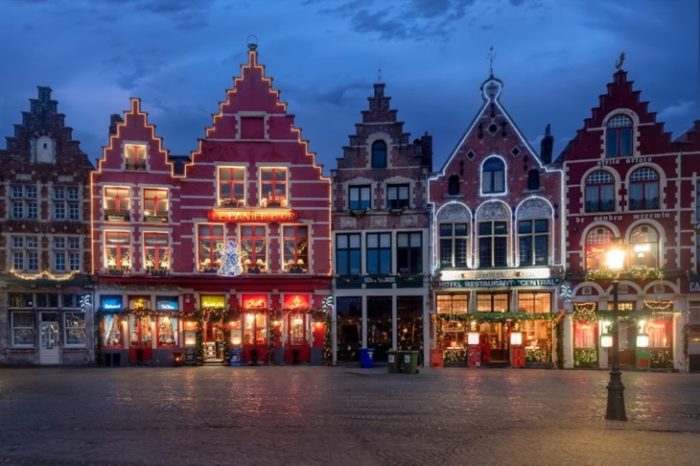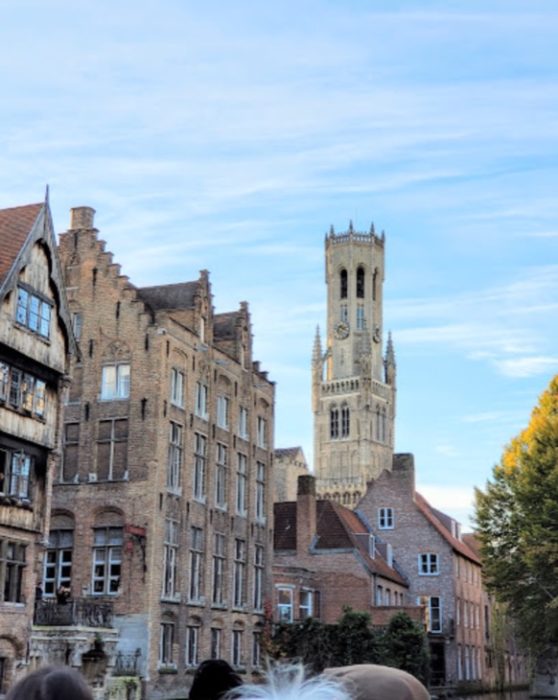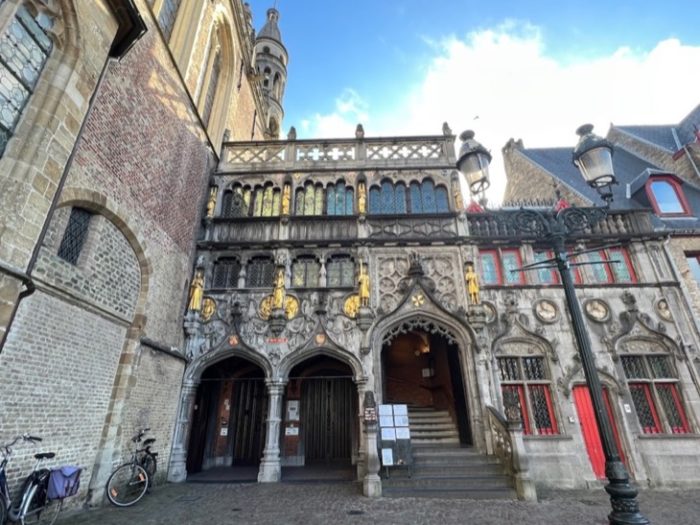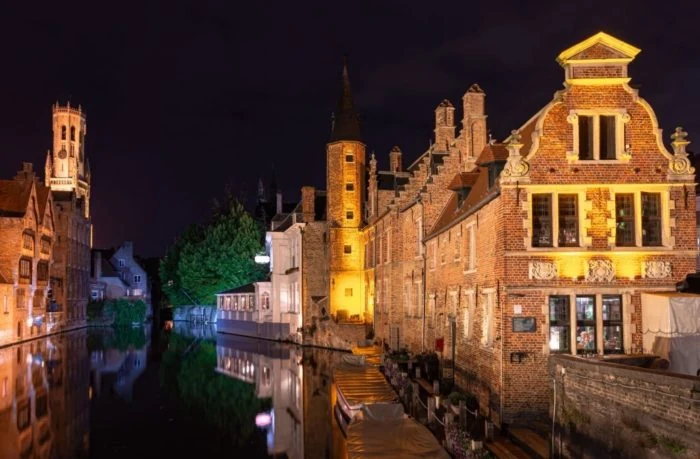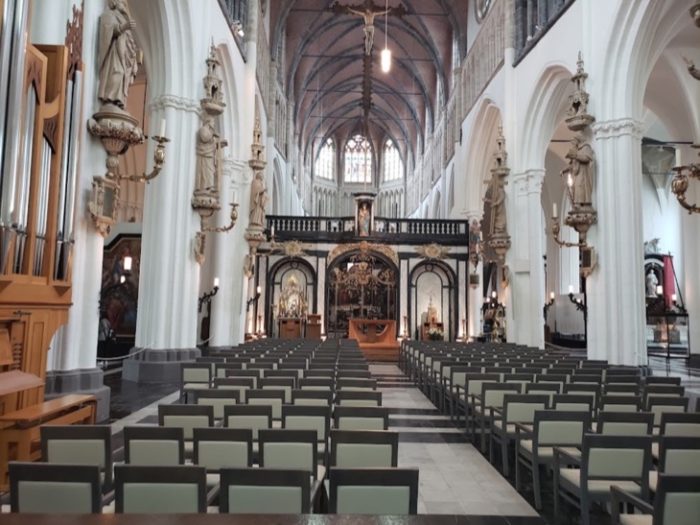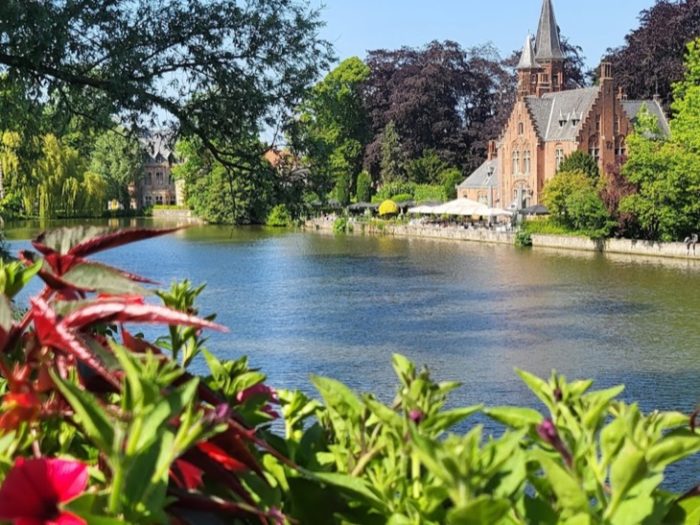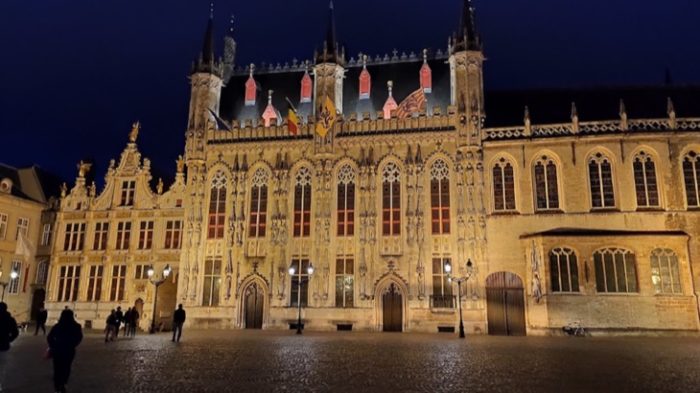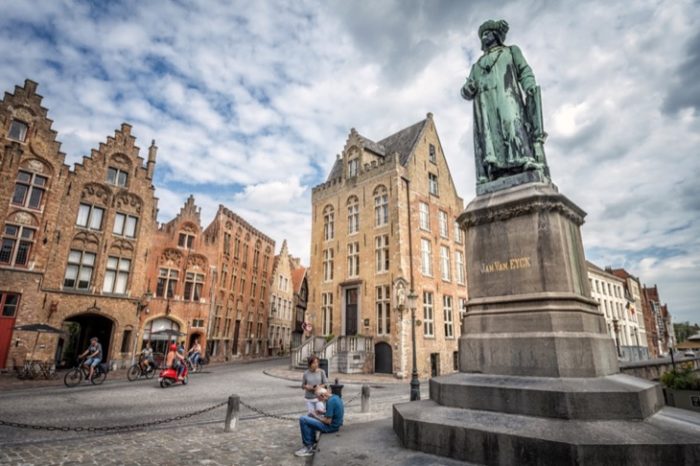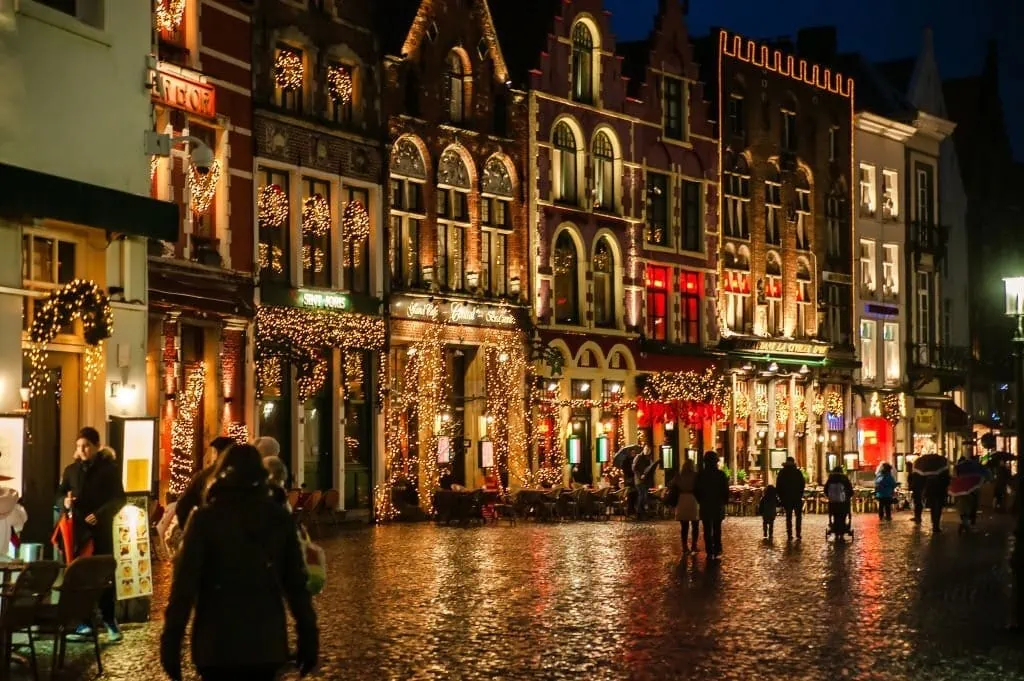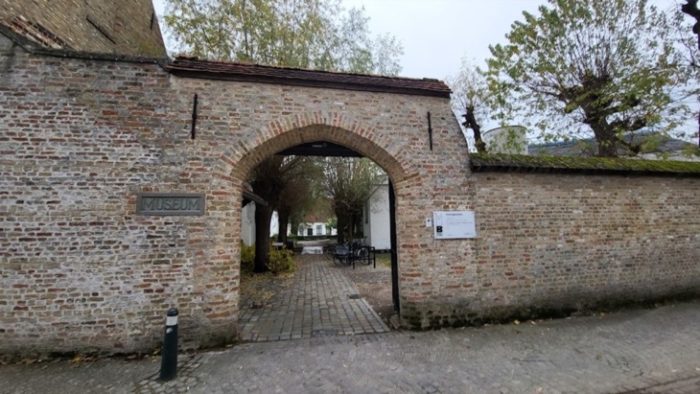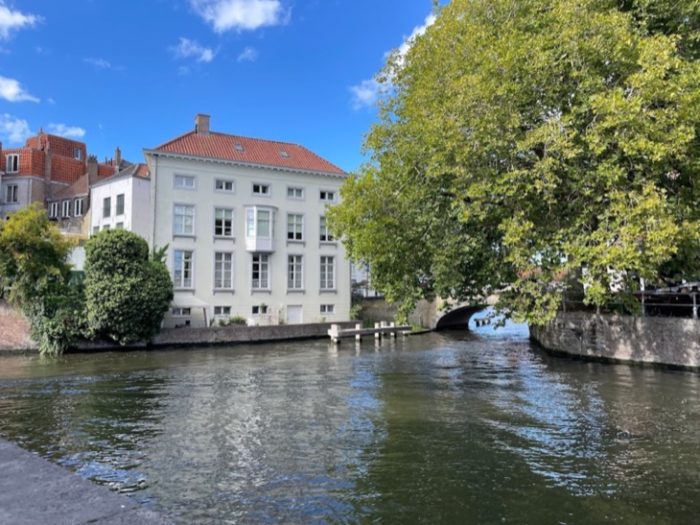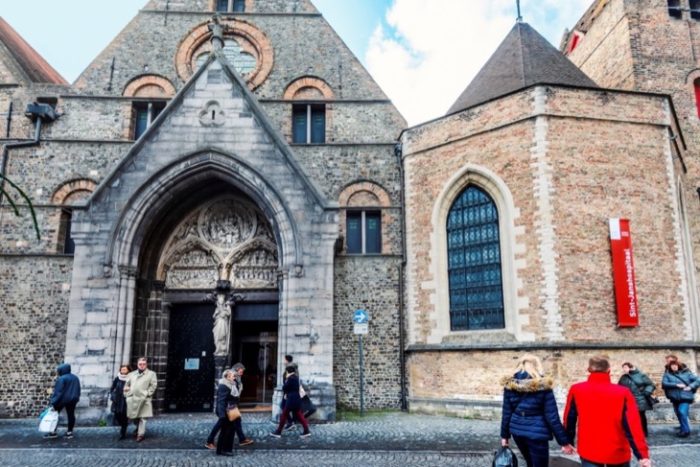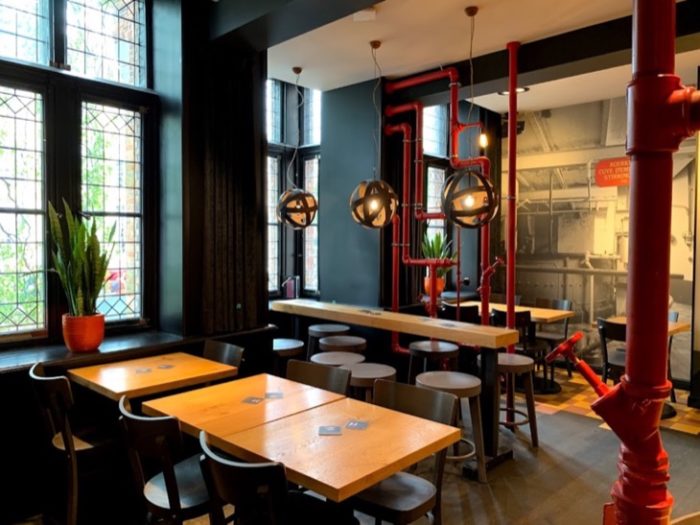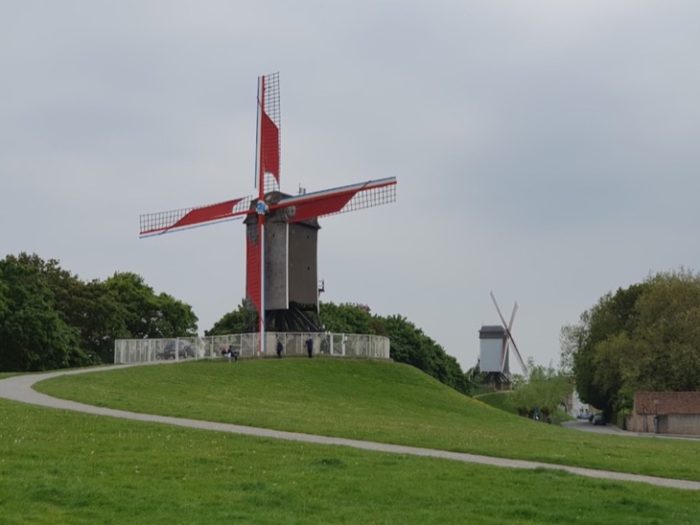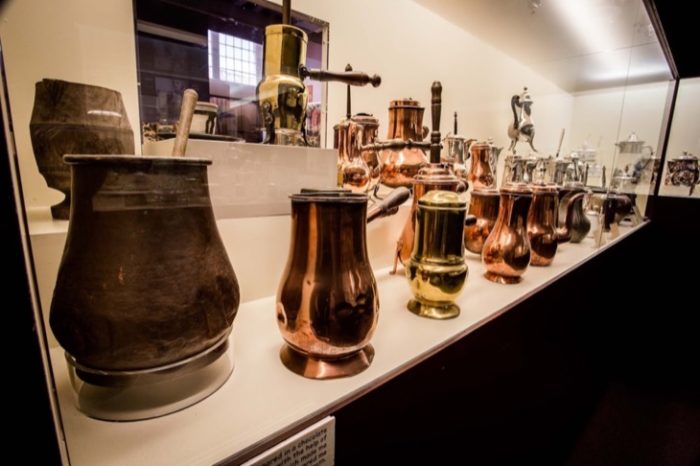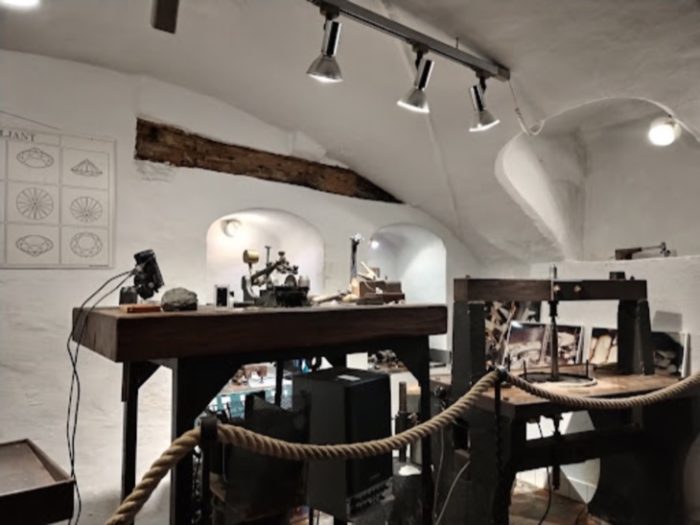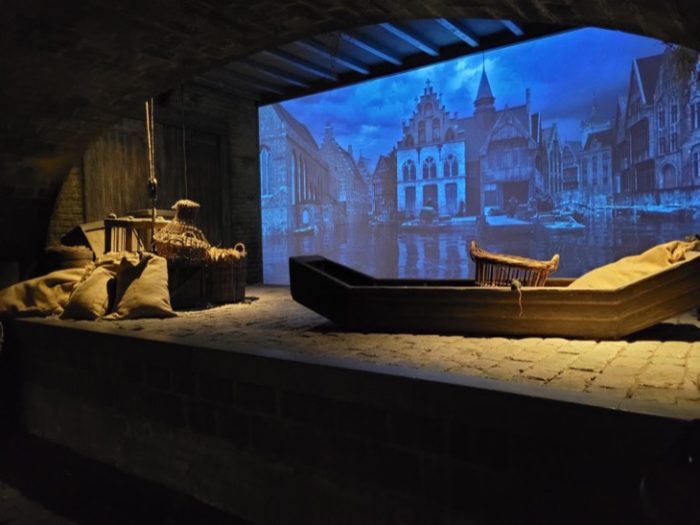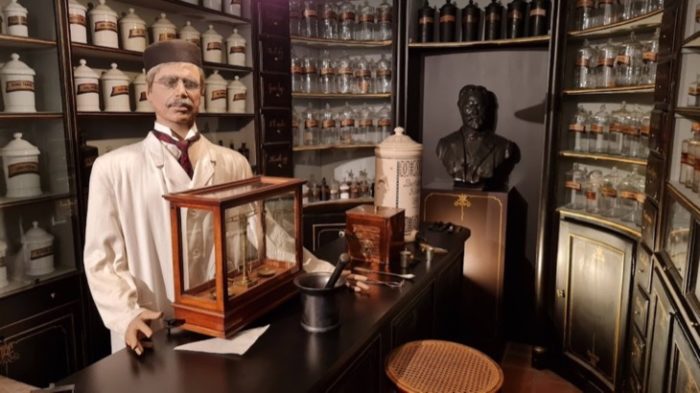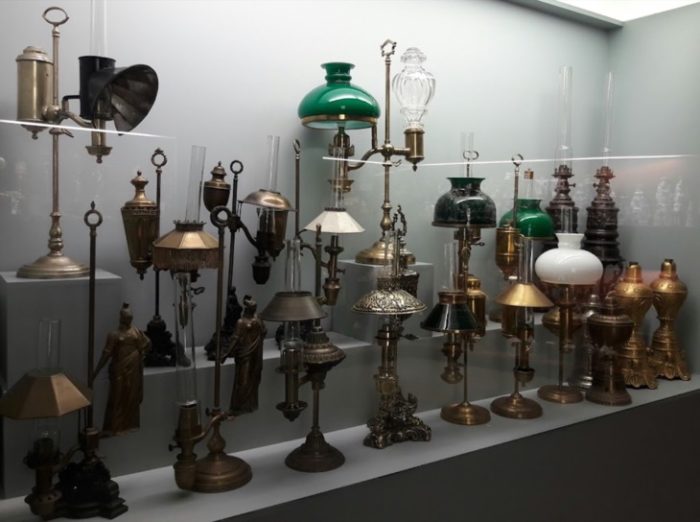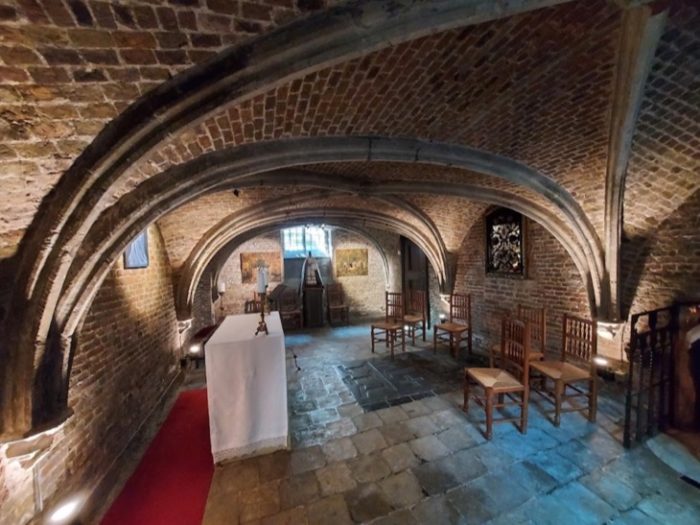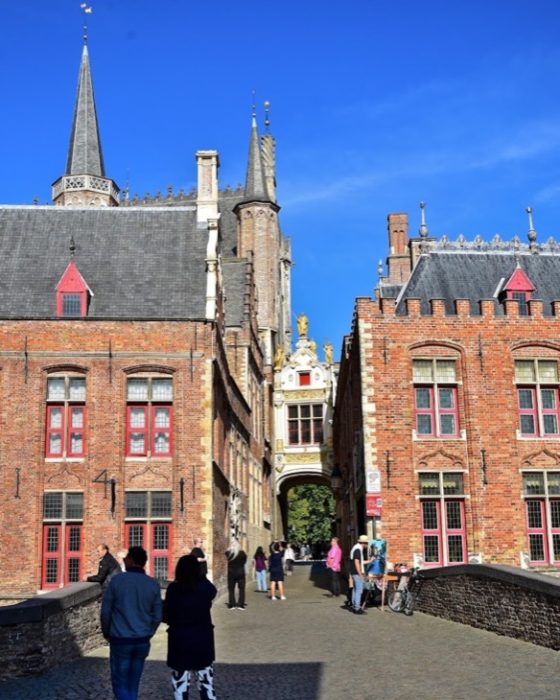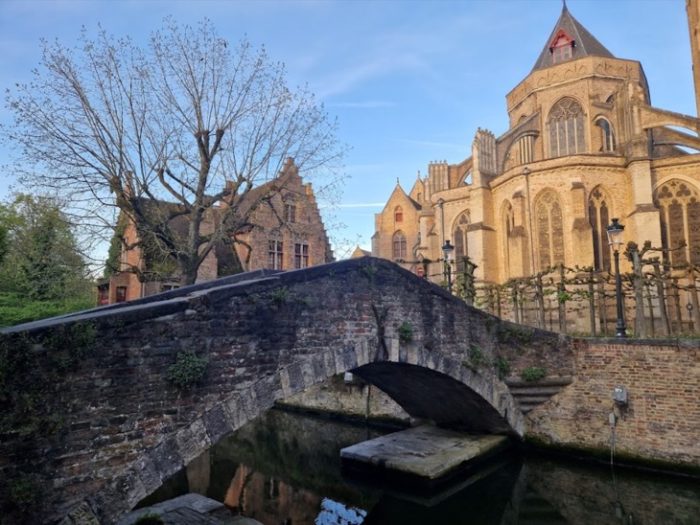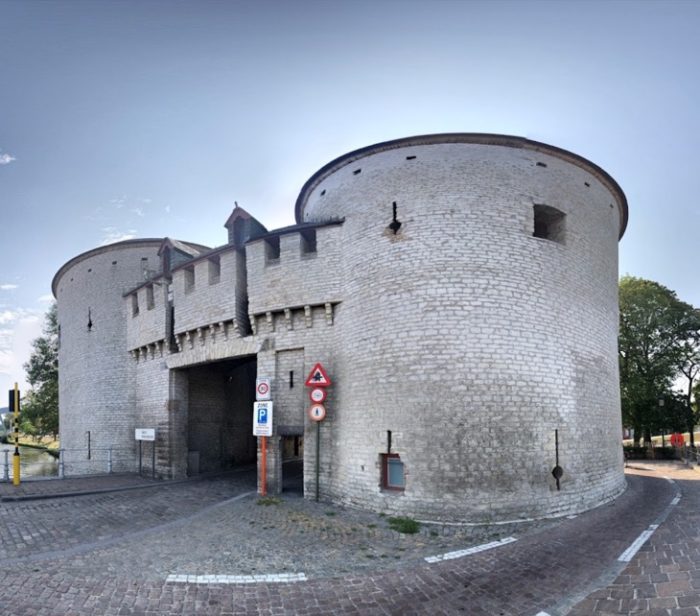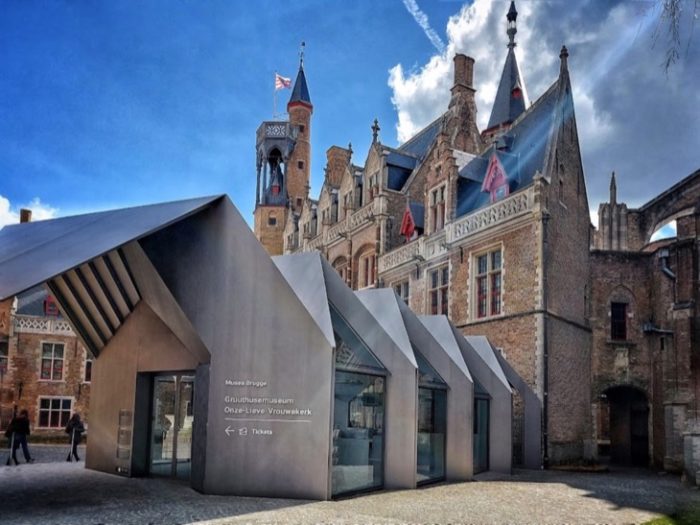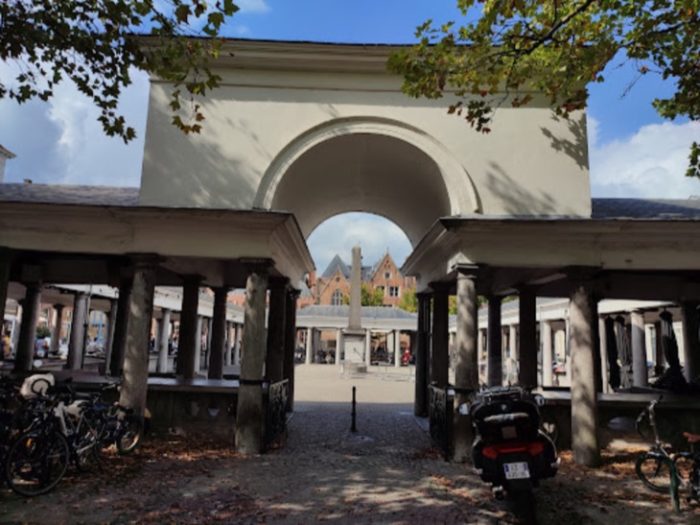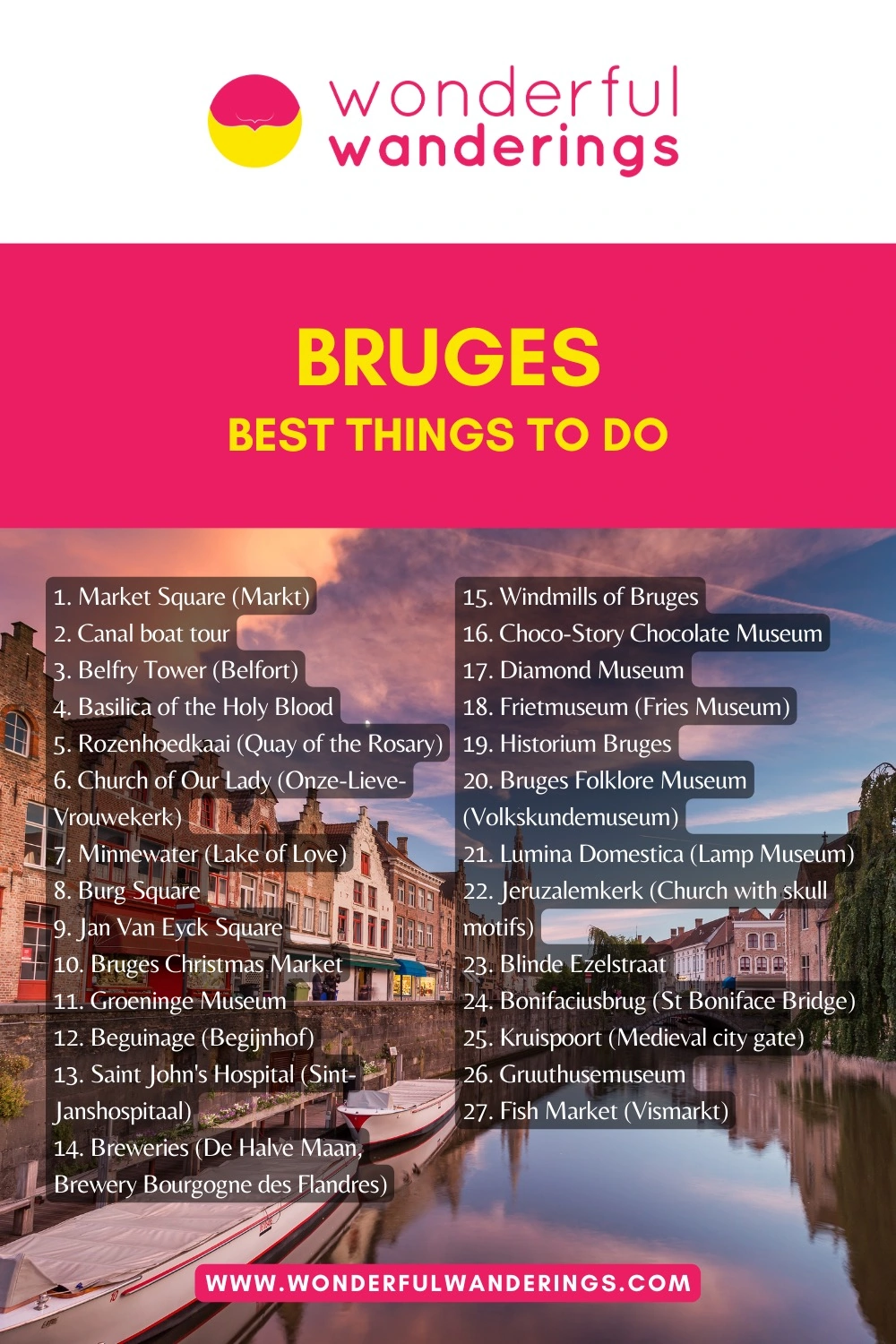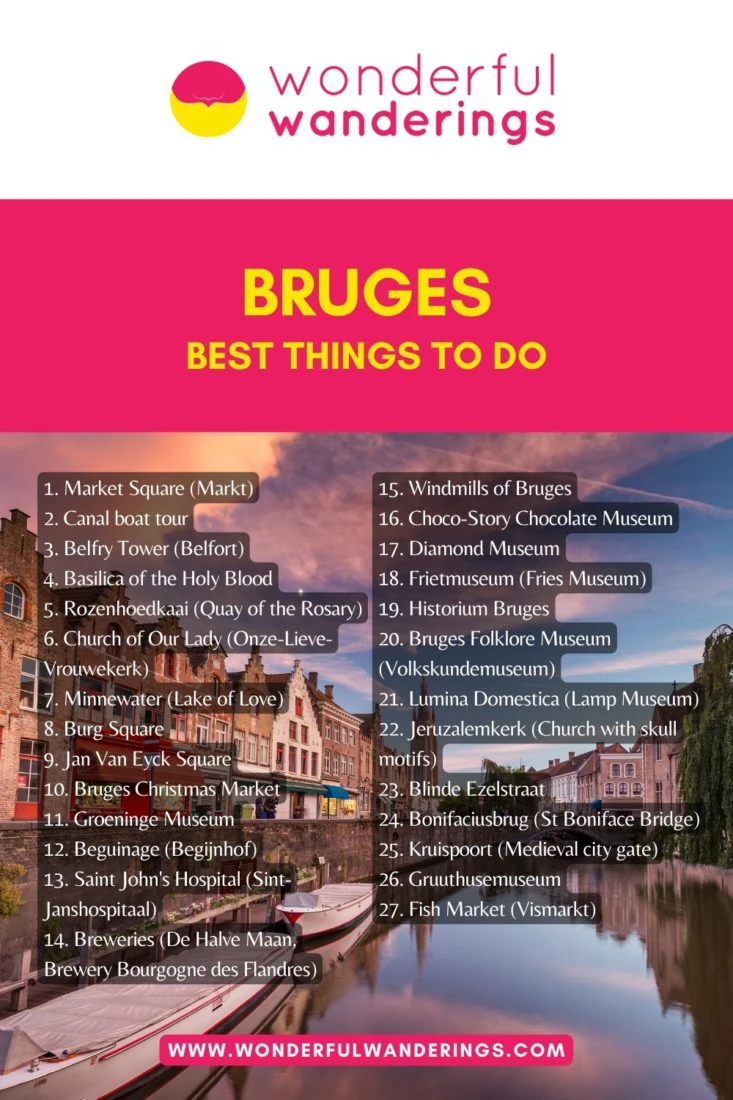Bruges is a medieval city in northern Belgium’s Flanders region. Bruges is full of picturesque canals, cobbled streets and that that is why it is called the “Venice of the North”.
Vikings founded Bruges as a port settlement in the 9th century. Its coast and inland waterway location let it become an important medieval European trade hub. By the 14th century, Bruges was one of Europe’s most prosperous cities with over 200,000 people.
Bruges declined in the 16th century when its main sea channel silted up. Trade shifted to cities like Antwerp. For centuries, Bruges stayed diminished until it attracted 19th century tourists to its quaint medieval charm. This brought new prosperity to Bruges that continues today with over 2 million annual visitors.
Listed below are the best things to do in Bruges.
- Market Square (Markt). Market Square is a historic open square and vibrant center of Bruges for over a thousand years. It hosts a bustling weekly market selling local produce, cheeses, meats and handmade goods. The square is surrounded by magnificent medieval buildings like the Belfry tower, Provincial Court and colorful gabled guildhouses.
- Canal boat tour. The canal boat tour explores Bruges’ picturesque waterways and landmarks. It passes sites like the Belfry, Church of Our Lady, Beguinage and picturesque buildings along Rozenhoedkaai. Live commentary provides history about Bruges’ canals. Tours run daily on open-top boats holding about 40 passengers.
- Belfry Tower (Belfort). The Belfry Tower is a 83 meter tall 13th century Gothic bell tower looming over Bruges’ Markt square. Its carillon bells historically regulated daily life. Visitors can climb 366 steps to reach the observation deck for panoramic views over Bruges.
- Basilica of the Holy Blood. The Basilica of the Holy Blood is a Roman Catholic minor basilica. It houses a revered relic, said to be cloth with Christ’s blood collected after the crucifixion. The Romanesque and Gothic style basilica was built in the 12th century as a chapel for the Count of Flanders.
- Rozenhoedkaai (Quay of the Rosary). Rozenhoedkaai is a picturesque canal offering amazing views of Bruges’ medieval architecture and the iconic Belfry tower. With its colorful buildings reflected in the calm waters, it is considered one of Bruges’ most photographed spots.
- Church of Our Lady (Onze-Lieve-Vrouwekerk). The Church of Our Lady is a 13th-15th century Gothic church renowned for its 115 meter high brick tower dominating Bruges’ skyline. Inside is Michelangelo’s famous sculpture “Madonna and Child”.
- Minnewater (Lake of Love). Minnewater is a scenic lake situated in a park in Bruges’ city center. According to legend, it is named Lake of Love after a young woman named Minna tragically died there. Today it is considered one of Bruges’ most romantic spots.
- Burg Square. Burg Square is a historic public square that has been the seat of Bruges’ civic government for centuries. The Gothic Bruges City Hall built in 1376 still governs from this square today.
- Jan Van Eyck Square. Jan Van Eyck Square is a picturesque public square featuring a statue honoring the 15th century Flemish painter. The scenic square offers charming views of the canal and architecture.
- Bruges Christmas Market. The Bruges Christmas Market is an annual market held in the city’s historic central square. It features stalls selling gifts, seasonal treats and drinks amidst medieval buildings decorated for Christmas with lights and greenery.
Contents
- 1. Market Square (Markt)
- 2. Canal boat tour
- 3. Belfry Tower (Belfort)
- 4. Basilica of the Holy Blood
- 5. Rozenhoedkaai (Quay of the Rosary)
- 6. Church of Our Lady (Onze-Lieve-Vrouwekerk)
- 7. Minnewater (Lake of Love)
- 8. Burg Square
- 9. Jan Van Eyck Square
- 10. Bruges Christmas Market
- 11. Groeninge Museum
- 12. Beguinage (Begijnhof)
- 13. Saint John’s Hospital (Sint-Janshospitaal)
- 14. Breweries (De Halve Maan, Brewery Bourgogne des Flandres)
- 15. Windmills of Bruges
- 16. Choco-Story Chocolate Museum
- 17. Diamond Museum
- 18. Frietmuseum (Fries Museum)
- 19. Historium Bruges
- 20. Bruges Folklore Museum (Volkskundemuseum)
- 21. Lumina Domestica (Lamp Museum)
- 22. Jeruzalemkerk (Church with skull motifs)
- 23. Blinde Ezelstraat
- 24. Bonifaciusbrug (St Boniface Bridge)
- 25. Kruispoort (Medieval city gate)
- 26. Gruuthusemuseum
- 27. Fish Market (Vismarkt)
- What are the best museums in Brugge?
- What are the best things to do with kids and toddlers in Brugge?
- What are the best things to do in Brugge during the summer?
- What are the best things to do in Brugge when it is raining?
- What are the most recognisable “In Bruges” filming locations?
- How to plan a 2-day trip to Bruges?
- Is there an airport in Bruges?
1. Market Square (Markt)
Market Square (Markt) Brugge is a historic open square located in the heart of Bruges, Belgium. The address for Market Square is Markt 8000 Bruges, Belgium. For over a thousand years, Market Square has been the vibrant center of Bruges. It was established as a marketplace in 958 AD and continues to host a bustling weekly open-air market on Wednesdays selling produce, cheeses, meats, flowers and handmade goods.
What makes Market Square special is the collection of magnificent medieval architecture surrounding it. The main point of interest is the Belfry of Bruges, an 83 meter tall Gothic bell tower built in the 13th century that looms over the square. Other notable buildings are the Provincial Court, featuring a Neo-Gothic facade and the row of colorful gabled guildhouses. In the center of the square stands a statue honoring Jan Breydel and Pieter de Coninck, heroic leaders during the Battle of the Golden Spurs against French forces in 1302. Horse-drawn carriages stationed around Market Square offer scenic tours through Bruges.
To reach Market Square, the closest train station is Bruges Station which is about a 15 minute walk away. Alternatively, city buses 1, 13, 14 and 21 stop right at the square for easy access. For visitors driving to Market Square, parking is very limited in the historic center. However, the parking garage ‘t Zand is a 5 minute walk away.
Market Square appeals to visitors of all ages and interests. Families enjoy perusing the market stalls, watching street performers and taking a horse carriage ride around the city. Foodies indulge in Belgian specialties like chocolate, waffles, frites and beers at the many restaurants and cafes lining the square. History buffs appreciate the medieval architecture and heroic statues. Photographers flock to capture photos of the picturesque buildings surrounding the spacious square. Architecture enthusiasts admire the many styles represented, from Gothic to Renaissance to Neo-Gothic.
Visiting Market Square itself is free and always open to the public. For the best experience, early morning or evening is recommended to avoid large midday crowds and to enjoy the square coming alive and glowing at sunset. On Wednesdays, the square hosts a vibrant weekly market from early morning until the early afternoon.
In addition to the weekly market, Market Square hosts many events and festivals year-round that attract both tourists and locals. The lead up to Christmas transforms the square into a magical Winter Wonderland, with an ice skating rink, Christmas market, light shows and festive decorations everywhere. Music festivals, cultural events and performances are held in the square. No matter the season, Market Square thrums with energy and remains the beating heart of the city after over a thousand years. Its layers of history and culture, along with its role as gathering place and hub of activity, make Market Square a must-see for anyone visiting the medieval city of Bruges.
2. Canal boat tour
The canal boat tour is a popular activity in Bruges, Belgium that allows visitors to explore the city’s picturesque canals and landmarks. Bruges is sometimes referred to as the “Venice of the North” due to its extensive network of scenic waterways that were historically used for transportation and trade. The canal boat tours typically begin at one of five docks located in central Bruges, with all tours following the same route and lasting around 30 minutes. Operators like Bootexcursies Gruuthuse, Boottochten Brugge and Coudenys provide regularly scheduled tours using open-top boats that accommodate up to 40 passengers. Tickets can be purchased on-site for approximately 10-12 EUR per adult and 7 EUR for children ages 4-11.
During the canal boat tour, visitors are able to admire Bruges’ medieval architecture and historic landmarks from the unique vantage point of the canals. Key sites along the route include the Belfry tower, Church of Our Lady, Beguinage, St. John’s Hospital, old Fish Market and the picturesque buildings lining Rozenhoedkaai often referred to as one of Bruges’ most photographed spots. Multilingual audio guides provide commentary about the history and significance of various landmarks.
Highlights of the canal boat tour include passing under elegantly arched bridges, seeing the stepped-gabled facades of merchants’ houses and watching swans gracefully float by. The boat captain typically serves as both navigator and guide, occasionally adding in historical facts and stories. The canal boat tour caters to a wide audience, including couples, families and solo travelers looking to rest their feet after walking Bruges’ cobbled streets. The leisurely route reveals the beauty of Bruges from the water, allowing visitors to gain new perspectives on popular sites. Those interested in architecture, history, photography and romantic scenery would appreciate this quintessential Bruges experience.
The tours run daily with boats departing as frequently as every 15 minutes. Morning times are ideal to avoid crowds and potentially shorter wait times. Since boarding is first-come, first-served, travelers should arrive at the dock at least 30 minutes early during peak summer months. Beyond the scheduled public tours, options for more intimate private canal boat tours are available by advanced reservation for an additional cost. These personalized cruises allow smaller groups to customize their experience with food, beverages and extended time on the water.
3. Belfry Tower (Belfort)
The Belfry Tower, known as the Belfort, is a medieval bell tower located in the heart of Bruges, Belgium. It stands 83 meters tall overlooking the city’s main square, the Markt. The tower is one of the most recognizable landmarks and symbols of Bruges. Construction on the Belfry Tower began in the 13th century. It originally housed the city’s treasury and archives and served as an observation post for spotting fires and other dangers. Over the centuries, the tower has been damaged by multiple fires and storms but was repeatedly rebuilt and restored.
The Belfry Tower is one of the oldest examples of medieval urban architecture in Belgium. The tower has been designated a UNESCO World Heritage Site along with 55 other belfries in Belgium and France. Inside the tower is a 47-bell carillon which was used historically to regulate daily life by signaling the time, alarms and events in Bruges. Today, concerts featuring the tower’s carillon bells continue to be played on Wednesdays, Saturdays and Sundays. Visitors can climb 366 steps inside the narrow spiral staircase of the tower for stunning 360-degree views over Bruges from the top observation deck.
The Belfry Tower is located on the Markt (Market Square) in the heart of the city’s historic center. The address is Markt 7, 8000 Brugge, Belgium. The tower can easily be reached on foot by walking from the Brugge central train station, which is about a 15 minute walk. For those traveling by car, parking garages and street parking are available near the Markt. Visitors can take the city buses that stop at the Markt to reach the Belfry Tower.
The Belfry Tower attracts visitors of all ages and interests. The tower and its views appeal to anyone who enjoys history, architecture and panoramic scenery. However, it is important to note that climbing the tower’s 366 spiral steps is challenging, so it may not be suitable for those unable to climb stairs or who suffer from claustrophobia. The tower’s carillon concerts would appeal to music lovers of all ages. Overall, the Belfry’s landmark status makes it a must-see attraction for most any visitor to Bruges.
Admission to enter the Belfry Tower ranges from €10-15 for adults depending on season and time of day. Concessions and discounts are available for seniors, students, children and those with the Musea Brugge Card. Children under 6 can enter for free. Tickets can be purchased at the tower’s entrance on the Markt in Bruges. Advance reservations are highly recommended as capacity is limited.
4. Basilica of the Holy Blood
The Basilica of the Holy Blood is a Roman Catholic minor basilica located in Bruges, Belgium. It was originally built between 1134 and 1157 AD as a private chapel for the residence of the Count of Flanders. What makes this basilica special is that it houses a revered relic known as the Holy Blood, which is said to be a cloth with bloodstains collected by Joseph of Arimathea after the crucifixion of Jesus Christ. According to legend, the relic was brought from the Holy Land to Bruges by Thierry of Alsace, Count of Flanders, in the 12th century after the Second Crusade.
The basilica is situated in Burg Square in the heart of Bruges’ historic center. It consists of two chapels – a lower Romanesque chapel dedicated to St. Basil the Great and an upper Gothic chapel that holds the Holy Blood relic. The lower chapel still retains its original 12th-century architecture and dark interior. In contrast, the upper chapel was rebuilt in Gothic style in the 16th century and renovated multiple times over the centuries, most recently in the 19th century in the Gothic Revival style.
The Holy Blood relic itself is contained in a rock crystal vial decorated with gold threading and wax seals. The vial is displayed in a glass-fronted gold cylinder at the altar in the upper chapel. Visitors can view the relic when it is brought out for veneration at scheduled times each day. The relic features in an annual Procession of the Holy Blood through the streets of Bruges every Ascension Day.
The basilica can be easily accessed on foot if staying in central Bruges, as it is located right on Burg Square. For those coming from farther afield, Bruges is connected by train to Brussels, Ghent and other Belgian cities. Once in Bruges, the basilica is just a short walk from the Bruges train station. Driving is an option, with parking available at nearby garages just outside the pedestrian city center. Due to its religious significance, the Basilica of the Holy Blood draws a mix of interested sightseers, devoted pilgrims and curious tourists. The free admission makes it accessible for visitors of all budgets. Families are welcome, but the atmosphere inside is one of reverence and quiet reflection, so it may not hold restless young children’s attention for very long. For older kids and adults with an interest in medieval architecture, relics and religious history, it makes an informative visit.
The basilica itself can be visited free of charge. To visit the museum housed in the basilica, there is an admission fee of around 5 EUR. The museum contains artifacts and artworks related to the Holy Blood relic and the basilica’s history. The relic in the upper chapel can be viewed at no cost during the times it is displayed each day.
5. Rozenhoedkaai (Quay of the Rosary)
Rozenhoedkaai, known as the Quay of the Rosary, is a picturesque canal located in the heart of Bruges, Belgium. It is located along the Dijver Canal and provides amazing views of the city’s medieval architecture, including the iconic Belfry of Bruges bell tower. Rozenhoedkaai is considered one of the most photographed spots in Bruges and has become an Instagram-worthy destination for tourists.
The canal is lined with charming historic buildings featuring intricate brickwork, pointed gables and ivy creeping up the facades. The colorful facades reflect off the calm waters, creating a mirror-like effect. This timeless atmosphere evokes the city’s medieval past, especially when swans drift by in the canal. Rozenhoedkaai offers the quintessential Bruges scene that graces countless postcards.
Rozenhoedkaai earned its name from the rosary vendors who once sold their wares on this quay. Today, it serves as a popular starting point for boat tours along Bruges’ picturesque waterways. Rozenhoedkaai comes alive in the evenings as a lively restaurant scene unfolds along its banks. It provides the ideal romantic backdrop for dining along the canals.
Rozenhoedkaai is located in the heart of Bruges, near several top attractions. Its full address is Rozenhoedkaai, 8000 Brugge, Belgium. Situated just northeast of the Grote Markt (Market Square), it is within walking distance of landmarks like the Belfry, the Basilica of the Holy Blood and Stadhuis (City Hall). Rozenhoedkaai can easily be reached on foot while exploring central Bruges.
Since Rozenhoedkaai lies in the middle of Bruges’ compact historic center, it is accessible via various transportation options. Visitors can take a train to Bruges Station, then walk about 15 minutes northeast to reach the quay. Alternately, a taxi from the station takes under 10 minutes. Driving and parking near Rozenhoedkaai is quite restricted, so traveling by train is preferable. Once in the city center, walking or biking between the main sights is recommended.
Rozenhoedkaai appeals to all types of visitors who want to admire Bruges’ scenery and medieval charm. The landmark naturally attracts tourists and photographers seeking iconic shots of the city. Couples enjoy strolling along the quayside hand-in-hand with Bruges’ dreamy backdrop. Even families find it an ideal place to observe the swans drifting by. Rozenhoedkaai offers a taste of Bruges for anyone looking to capture the city’s romantic essence.
As Rozenhoedkaai is a public canal area, there is no cost to walk along it and take in the views. Visitors can also dine along the canal at one of Rozenhoedkaai’s restaurants, many of which offer outdoor seating. Rozenhoedkaai captivates visitors with its postcard-perfect scenery along one of Bruges’ idyllic canals.
6. Church of Our Lady (Onze-Lieve-Vrouwekerk)
The Church of Our Lady (Onze-Lieve-Vrouwekerk) is a Gothic church located in Bruges, Belgium. It dates back mainly to the 13th, 14th and 15th centuries and is one of the oldest places of worship in the city. The church is renowned for its imposing 115.5-meter high brick tower, which dominates the Bruges skyline and remains the highest structure in the city.
Inside the church, visitors can find a wealth of valuable art treasures, including Michelangelo’s famous early 16th century marble sculpture “Madonna and Child”. This is the only work by Michelangelo that left Italy during his lifetime. The church also contains numerous paintings from the 16th and 17th centuries, as well as the ornate 16th century tombs of Mary of Burgundy and her father, Charles the Bold. Additionally, 13th and 14th century painted crypts can be found beneath the church.
The Church of Our Lady is located in central Bruges at Mariastraat 38, 8000 Brugge. The easiest way to reach the church is on foot, as it is located just over 1 km south of Bruges railway station. Visitors can also take buses that stop at the Onze-Lieve-Vrouwekerk bus stop right outside the church, including buses 1, 6, 11 and 16.
The Gothic church and its art collections appeal to a wide audience. History and architecture enthusiasts will appreciate the medieval brick tower and tombs, while art lovers can admire the Madonna sculpture and paintings. Families are also drawn to the church, as kids can gaze up at the soaring tower and learn about the history. Religious visitors also come to see the church and its renowned Madonna.
The church itself is open daily and can be visited for free. To access the church’s museum section and view highlights like Michelangelo’s Madonna and the tombs, there is an admission fee. Tickets cost 8 EUR for adults, 7 EUR for young adults aged 18-25, 4 EUR for youths aged 13-17 and free for children under 13. Discounted combination tickets are available. Visitors should note that some areas of the church may be closed at times for ongoing renovations.
7. Minnewater (Lake of Love)
Minnewater, known as the Lake of Love, is a lake located in Bruges, Belgium. It is situated in Minnewater Park, in the southern part of Bruges’ historic city center.
The lake has a tragic legendary story behind its name. According to local folklore, a young woman named Minna fell in love with a man named Stromberg from a neighboring tribe, against the wishes of her father. She fled into the nearby woods to avoid an arranged marriage, but tragically died of exhaustion in Stromberg’s arms when he finally found her. Stromberg then built a dam to bury Minna’s body beneath the waters, naming it “Minna Water” in her memory. This romantic legend is the origin of the lake’s name as well as its reputation as a romantic locale.
Today, Minnewater is considered one of the most beautiful and romantic spots in Bruges. Its scenic setting, surrounded by trees, medieval buildings and picturesque bridges, evokes a fairy tale atmosphere. The lake is home to many swans, which are symbols of Bruges. Couples often walk hand-in-hand over the Lake of Love bridge, as legend promises eternal love to those who cross it together.
Minnewater Park hosts concerts and cultural events, especially in summer. It is located just south of Bruges’ historic central district. Visitors can easily walk there from the city center in about 15-20 minutes. Coming from the train station, it’s an even shorter 10 minute stroll. Those arriving by car can find parking around the lake.
The romantic ambiance makes Minnewater Lake especially appealing to couples, both young and old. Its natural scenery and cultural offerings also attract families and solo travelers looking to escape the crowds. Entrance to the park and lake is free for all visitors.
8. Burg Square
Burg Square is a historic public square located in the heart of Bruges, Belgium. It is one of the city’s two main squares, along with the larger Markt (Market Square). Burg Square has been an important center of power and administration in Bruges for centuries. The square gets its name from the original fortress that was built there in the 9th century by Count Baldwin I of Flanders. Over the centuries, as Bruges grew into an important center of trade and commerce, Burg Square remained the seat of the city’s civic government and justice system. Several landmark buildings from different eras surround Burg Square, making it an architectural guide to Bruges’ long history.
The most prominent building on Burg Square is the Bruges City Hall, also known as the Stadhuis. Bruges City Hall was built in 1376, making it one of the oldest in Belgium. For over 600 years, Bruges has been governed from this ornate building. Visitors can tour the interior to see the magnificent Gothic Bruges City Hall, admiring its colorful murals and vaulted ceiling.
Next to the Stadhuis stands the Old Civil Registry, a Renaissance building from 1537 capped with statues of Justice, Moses and Aaron. On the other side of the square is the Basilica of the Holy Blood. Burg Square occupies the site of the original fortified castle of the first Count of Flanders in the 9th century. Some foundations from the medieval St. Donatian’s Cathedral are preserved under the square. The relics can be viewed in the cellar of the Crowne Plaza Hotel that now stands there. A small street called Burgstraat connects Burg Square to the nearby Philipstockstraat canal.
Burg Square is located in central Bruges, right next to the city’s main square called the Markt. The easiest way to reach Burg Square is on foot, as it sits in the middle of the compact historic center of Bruges. Burg Square is about a 10 minute walk from Bruges’ main train station. Driving to the square is not advised since most of the historic center is pedestrianized.
Today, Burg Square is a lively hub surrounded by casual restaurants and cafes with outdoor seating. Visitors of all ages are drawn to the architectural variety surrounding the square. There is no admission fee to enter Burg Square itself, as it is a public square. Guided tours of the interiors of buildings like the City Hall and Basilica of the Holy Blood have a small fee.
The square hosts markets and events throughout the year. It turns into a charming ice skating rink in winter.
9. Jan Van Eyck Square
Jan Van Eyck Square is a picturesque public square located in the heart of Bruges, Belgium. Jan Van Eyck Square is located at the intersection of Academiestraat, Spiegelrei canal and Spanjaardstraat in the historic center of Bruges. The address is Jan van Eyckplein 2, 8000 Brugge, Belgium.
Jan Van Eyck Square is named after the famous 15th century Flemish painter Jan van Eyck, who lived and worked in Bruges during the city’s golden age as a center of art and commerce. A large bronze statue of Jan van Eyck stands in the center of the square, depicting the artist holding a flask used for mixing paint pigments. The square was built in the late 18th century after the New Year’s Bridge that previously spanned the canal at this spot was demolished.
On the north end of the square stands the medieval Old Toll House complex with its distinctive natural grey stone facade. Visitors to the square can admire the views of the canal and architecture while sitting at one of the outdoor cafes. To reach Jan Van Eyck Square, the easiest way is to walk from Bruges’ Market Square. Head north on Breidelstraat, turn left on Academiestraat and the square will be on your right after about a 5 minute walk.
Jan Van Eyck Square appeals to visitors of all ages. Its scenic setting and central location make it a popular spot to stop for photos. Families enjoy the square as the restaurants around it are casual and kid-friendly. For art lovers, it is interesting to see the statue honoring one of Belgium’s most renowned painters. And the square offers a pleasant space for all to take a break and enjoy the atmosphere of medieval Bruges. There is no admission fee to visit Jan Van Eyck Square. The square itself is open to the public. Visitors can access the square at any time of day or night. The restaurants around the square are open during regular business hours. But simply sitting in the square, strolling around and taking in the sights is free for all to enjoy.
10. Bruges Christmas Market
The Bruges Christmas Market is an annual Christmas market held in Bruges, Belgium. It takes place in the city’s historic central Markt (Market) Square and the nearby Simon Stevinplein Square. The market typically runs from the end of November through early January each year.
The Bruges Christmas Market stands out for its fairytale-like medieval setting. The Markt Square is surrounded by buildings dating back to Bruges’ heyday as an important trading city in the Middle Ages. The square’s most iconic structure is the 83-meter tall belfry tower. At night, the historic buildings are illuminated, adding to the magical atmosphere. The market stalls are nestled between the old facades, lining pedestrianized cobblestone streets. Soft glowing lights, garlands and Christmas trees further decorate the squares. The aromas of Belgian waffles, frites, sausages and mulled wine fill the chilly air. Visitors can browse the stalls for unique holiday gifts and sample seasonal treats. There may also be live music, carolers or other entertainment. An ice skating rink is sometimes set up right in Markt Square as well.
People visiting the Bruges Christmas Market can take the train from Brussels to Bruges Station. The train ride takes around 1 hour. Bruges Station is just over a mile south of Markt Square, about a 20 minute walk. Visitors can also take a taxi or local bus from the station to the Christmas market. Limited parking is available around the old town. Driving and parking in central Bruges can be difficult due to narrow streets and limited parking.
The Bruges Christmas Market appeals to people of all ages. Kids can go ice skating, meet Santa and enjoy rides and games. Families can wander the squares together, sampling treats, listening to music and finding unique gifts. Couples and friends will appreciate meandering the stalls with a warm beverage and soaking up the holiday ambiance. Senior travelers can take their time browsing the markets and resting at nearby cafes. Solo travelers can easily immerse themselves in the festivities as well. The market offers something for everyone seeking Christmas spirit.
The Bruges Christmas Market does not charge an admission fee. Visitors can access the squares and stroll through the markets for free. Individual purchases, food, drinks and activities like skating do require payment. An advantage of Christmas markets is the opportunity to leisurely explore without feeling obligated to spend money, unless something catches your eye.
11. Groeninge Museum
The Groeninge Museum is an art museum located in the historic center of Bruges, Belgium. The museum is housed in the former Eekhout Abbey and showcases six centuries of Belgian and Flemish fine art, from the Flemish Primitives of the 15th century to the work of modern Belgian artists like René Magritte.
The museum is best known for its outstanding collection of Flemish Primitive art. Works by famous 15th century Flemish artists like Jan van Eyck, Hans Memling and Gerard David are highlights of the museum’s collection. Two of the most famous works are Jan van Eyck’s ‘The Virgin with Canon van der Paele’ (1436) and Hans Memling’s ‘Virgin and Child with Saints and Donor’ (1480). Both paintings demonstrate the extreme realism and attention to detail that characterize the Flemish Primitive style. Other artists represented include Hugo van der Goes, Hieronymus Bosch and Pieter Brueghel the Younger. This collection gives insight into Bruges’ history as an important artistic center in the 15th and 16th centuries.
The Groeninge Museum has a wide-ranging collection covering later periods. There are examples of Flemish Baroque art from the 17th century along with 18th and 19th century Neoclassical works. The museum also holds an impressive array of Belgian symbolist and modernist art from the late 19th and early 20th centuries. Significant works by Belgian surrealist René Magritte can be found here. Contemporary Belgian art of the postwar period rounds out the museum’s diverse collections.
The Groeninge Museum is located in central Bruges at Dijver 12, 8000 Bruges. It sits along the scenic Dijver canal, close to landmarks like the Church of Our Lady. The museum can be reached on foot from Bruges’ Market Square in about 15 minutes. The Groeninge Museum is suitable for visitors of all ages interested in art and history. Families with older children can enjoy exploring the collections together. For younger kids, the museum offers activity packs to make the experience more engaging. Adults interested in art history, especially that of Belgium and the Low Countries, will appreciate the breadth and quality of the museum’s holdings. Because of the medieval architecture and canal side location, the museum also appeals to visitors looking to experience the historic ambience of Bruges.
Standard admission to the permanent collection costs €15 for adults, with discounted tickets available for seniors, youth and families. Access to temporary exhibitions requires an additional fee. Entrance to the neighboring Arentshuis museum is included with a Groeninge Museum ticket. The museum is open Tuesday to Sunday from 9:30am to 5pm and is closed on Mondays.
12. Beguinage (Begijnhof)
The Beguinage (Begijnhof) in Bruges is a well-preserved semi-monastic community that was originally inhabited by Beguines. Beguines were lay religious women who dedicated themselves to God through prayer, good works and charity without taking formal vows or retiring completely from the world.
The Beguinage in Brugge, is located at Begijnhof 24-28-30, 8000 Brugge, Belgium. It is situated in the southern part of Bruges’ historic city center, near Lake Minnewater.
The Beguinage dates back to 1245 when it was founded by Margaret of Constantinople, Countess of Flanders. She established it as a place for Beguines to live and worship together. For centuries it housed a community of Beguines, reaching its peak in the 17th and 18th centuries. The last Beguine died in 1926. In 1927 Benedictine nuns moved into the Beguinage and it became a Benedictine convent. Some of the small whitewashed houses are still inhabited by Benedictine sisters today. At the heart of the Beguinage stands the Church of St. Elizabeth, originally built in 1245. Though rebuilt in the early 17th century, it still maintains its Gothic architecture. Visitors may be able to hear the Benedictine sisters singing vespers in the afternoons.
As the only surviving beguinage in Bruges, the Beguinage offers a rare glimpse into medieval life in Belgium. The atmosphere transports visitors back in time to when Beguines inhabited the small orderly houses bordering the green central garden.
Visitors can reach the Beguinage by walking from Bruges’ city center. It’s about a 10-15 minute walk from the Market Square and Belfry Tower. The nearest tram stop is Sint-Jakobs, just a couple minutes away. Visitors arriving by train can take Tram 1 from the central station which stops at Sint-Jakobs.
The Beguinage is not especially kid-friendly, as visitors are requested to be quiet and respectful. Entry to walk around the Beguinage is free. Although, there is a small museum located in one of the former Beguine houses that costs around 2 euros for adults and 1 euro for students and seniors.
13. Saint John’s Hospital (Sint-Janshospitaal)
Saint John’s Hospital (Sint-Janshospitaal) is one of the oldest preserved hospital buildings in Europe. It is located in Bruges, Belgium at Mariastraat 38, 8000 Brugge. Saint John’s Hospital was founded in the mid-12th century as a place to care for sick pilgrims and travelers. Throughout the Middle Ages, it expanded into a large complex that provided medical treatment and shelter to the poor and needy.
The Saint John’s Hospital kept operating as a hospital from the 1100s all the way until the late 1970s. For over 700 years, it served as an important medical institution for the city of Bruges. Today, it stands as a remarkably well-preserved example of medieval architecture. Visitors can view the historic hospital rooms, church, monastery, convent and pharmacy.
Saint John’s Hospital is also known for its fine art collection, especially the works of the renowned 15th century Flemish painter Hans Memling. The hospital houses six of Memling’s most famous pieces, including the Shrine of Saint Ursula. These were painted specifically for the hospital and have been housed there since the 1400s.
To get to Saint John’s Hospital, visitors can take public transportation or walk. It is centrally located in downtown Bruges, next to the Church of Our Lady and just steps from the famous Markt square. The nearest bus stop is O.L.V. Church, a 5 minute walk away. Bruges’ main train station is only a 10 minute walk from the hospital. Visitors exploring the city center on foot will find it right along the picturesque canals.
Saint John’s Hospital is an excellent activity for history and art enthusiasts of all ages. Families can enjoy learning about medieval medicine and life inside the old hospital. For adults interested in Flemish Primitive painters, seeing Memling’s works in their original context is a treat. And architecture buffs will appreciate the well-preserved Gothic and Romanesque buildings and attic.
Admission to Saint John’s costs €12 for adults, €10 for youth ages 12-25 and is free for children under 12. This ticket grants access to the full museum including the historic pharmacy. Special combo tickets and museum passes can reduce the cost.
14. Breweries (De Halve Maan, Brewery Bourgogne des Flandres)
De Halve Maan and Brewery Bourgogne des Flandres are two historic breweries located in the heart of Bruges that offer tours and tastings.
De Halve Maan is a family-run brewery that has been in operation since 1856, making it the oldest working brewery in Bruges. The brewery is known for producing the Brugse Zot and Straffe Hendrik beers. Visitors can take a 45-minute guided tour that takes them through the historic brewing rooms and ends with a view of Bruges from the rooftop of the brewery. The tour concludes with a complimentary glass of Brugse Zot blond, Brugse Zot dubbel or Straffe Hendrik tripel beer in the bar.
Brewery Bourgogne des Flandres reopened in Bruges in 2015 after being contract-brewed elsewhere for many years. The brewery specializes in the traditional Flemish art of blending mature and young lambic beers to produce their signature Bourgogne des Flandres. The brewery offers 45-minute guided tours in English that teach visitors about the history of the beer and the brewing process. The tour includes the opportunity to try tapping a beer keg digitally. At the end of the tour, visitors receive a complimentary glass of Bourgogne des Flandres to enjoy.
Both breweries are located in central Bruges, within just a few blocks of main sights like the Belfry of Bruges. De Halve Maan is located at Walplein 26, 8000 Brugge and Brewery Bourgogne des Flandres is located at Kartuizerinnenstraat 6, 8000 Brugge. The breweries can easily be reached on foot from most hotels and attractions in the compact city center of Bruges. Those arriving by train can access the city center and breweries by taking a short walk of about 15 minutes or less from the Bruges train station.
The brewery tours and beer tastings at De Halve Maan and Brewery Bourgogne des Flandres are suitable for adults 21 and over who are interested in beer and the brewing process. Children are generally not permitted on the regular brewery tours but both locations offer periodic special family tours. The standard guided tour at De Halve Maan costs 16 euros per adult and includes one beer at the end. The deluxe 90-minute tour is 26 euros and includes tastings of several beers. The tour cost at Brewery Bourgogne des Flandres is 14 euros per adult and also includes one beer. For those just looking to sample the beers without a full tour, the breweries have bars and restaurants on-site where the beers can be purchased individually or in tasting flights.
15. Windmills of Bruges
Bruges once had over 20 windmills circling the city on top of its ramparts as early as the 13th century. Today, only four of the windmills remain, located on Kruisvest between Kruispoort and Dampoort. The windmills exemplify the city’s ingenious use of renewable wind energy before modern technology.
The four windmills are all located along Kruisvest in Bruges, Belgium. The northernmost windmill is Koeleweimolen, originally built in 1765. Next is Nieuwe Papegaai Mill, a rebuilt oil mill from 1790. The only windmill in its original position is Sint-Janshuismolen, built in 1770. The southernmost windmill is Bonne Chieremolen, moved to Bruges in 1911.
Visitors can take public transportation or walk to see the windmills from the city center. Buses heading east from the central Markt stop near the Kruispoort gate, about a 10-15 minute walk from the first windmill. Cycling or walking along the scenic tree-lined paths from the city center takes around 30 minutes to reach the windmills.
The windmills appeal to visitors of all ages interested in history, architecture, photography and renewable energy. Families can enjoy an outing in the park surroundings. Sint-Janshuismolen has a small museum inside that children can explore to learn about milling history. For photographers, the windmills create excellent photo backdrops, especially at sunset. The windmills showcase Holland’s legacy of innovative wind technology in a picturesque historical setting.
There is no cost to view the windmills from the outside along Kruisvest. Sint-Janshuismolen charges a small fee of around 2-3 euros to enter the windmill and see the museum exhibits inside.
16. Choco-Story Chocolate Museum
Choco-Story is a chocolate museum located in Bruges. The museum is dedicated to showcasing the history and production of chocolate, particularly Belgian chocolate. Choco-Story is located in the historic ‘House de Croon’ building on Sint-Jansplein in central Bruges. The full address is Wijnzakstraat 2, 8000 Bruges.
Choco-Story museum features interactive exhibits, live chocolate-making demonstrations and chocolate tastings. Visitors can learn about the origins of chocolate with the ancient Maya and Aztecs and follow its spread to Europe and Belgium. Choco-Story brings chocolate history to life through its extensive collection of artifacts, illustrations and videos. A key highlight is the demonstration at the end where a chocolatier shows how to make pralines and other Belgian confections.
To get to Choco-Story Chocolate Museum, the easiest way is to take the bus to the city center of Bruges and get off at the Grote Markt/Grand Place. From there, it is a short 10 minute walk along Breidelstraat to the museum on Sint-Jansplein. Visitors arriving by train can take a taxi or city bus from Bruges central station as well. The museum is located right in the heart of historic Bruges making it very accessible.
Choco-Story is suitable for visitors of all ages, especially families with kids. Children will enjoy the interactive exhibits and dressing up in period costumes. For chocolate lovers, the museum provides an immersive experience to indulge in their passion. Foodies and anyone interested in the history and artistry of chocolate making will find the museum fascinating as well.
Admission tickets to Choco-Story Chocolate Museum cost 13 euros for adults, 11 euros for seniors and students and 8 euros for children ages 3-11. Children under 3 get in for free. Combination tickets with other Bruges museums are available. Tickets can be purchased at the museum entrance or online in advance. It takes approximately 1-2 hours to fully experience everything the chocolate museum has to offer.
17. Diamond Museum
The Diamond Museum (Diamantmuseum) is located in the city of Bruges, Belgium at Katelijnestraat 43, 8000 Brugge. The museum is dedicated to the history of diamond cutting and polishing in Bruges, which was invented in the city over 500 years ago. Bruges was one of the earliest European cities to develop diamond cutting techniques, before the industry shifted to Antwerp and Amsterdam. The museum features exhibits on the origins of diamonds, the tools and techniques used for cutting and polishing and the role of Bruges in the evolution of the diamond industry. There are displays of valuable historic diamonds and jewelry and demonstrations of diamond polishing. The museum also highlights notable diamond cutters from Bruges such as Lodewijk van Berken, who pioneered the “pear cut” technique in the 15th century to make diamonds sparkle more brilliantly.
Visitors can reach the Diamond Museum by taking the train to Bruges Station, then walking about 15 minutes to the museum at Katelijnestraat 43. Taxis and buses are also available from the station. Drivers can park in the Katelijne Car Park near the museum. The museum is suitable for adults and older children interested in science, history and craftsmanship. Younger kids may be bored by the technical displays. Families and couples often visit the museum together. The demonstrations of diamond polishing, included with admission, fascinate both children and adults.
Standard admission to the Diamond Museum is 9.50 euros for adults, 8.50 euros for seniors and students and 8.50 euros for children ages 6-12. Children under 6 enter for free. The museum is open daily from 10:30am to 5:30pm, except for certain holidays. Advance reservations are not required for individuals, but groups should book ahead for diamond polishing demonstrations.
18. Frietmuseum (Fries Museum)
The Frietmuseum is the world’s first and only museum dedicated to the history of the potato and the production of Belgian fries, also known as friet. It is located at Vlamingstraat 33, 8000 Brugge. The museum opened in 2008 and is housed in one of the oldest and most beautiful buildings in Bruges, the 14th century Saaihalle (former wool hall).
The Frietmuseum traces the fascinating history of the humble potato, from its origins in Peru over 10,000 years ago to becoming one of Belgium’s most iconic foods. Visitors can learn about the arrival of the potato in Europe, the development of various frying techniques and see antique chip-making machines and potato peelers. Exhibits include artworks, cartoons, advertisements and memorabilia related to potatoes and fries. An educational video demonstrates how to make the perfect crispy Belgian-style fry.
Kids can enjoy interactive exhibits like a “Fritt’ Kabaret” song and dance show performed by singing potato characters. They can also roleplay operating an old-fashioned Belgian frites stand. The Potato Shooter game allows kids to protect the potato crop from insects. At the end of the tour, visitors can indulge in a cone of authentic Belgian fries at the museum’s basement frituur (fry shop), made from fresh potatoes fried in beef tallow. The fries come with an array of traditional sauces and patrons receive a discount on their fries with their museum ticket.
The best way to reach the Frietmuseum is by taking the train to Bruges Station and walking for around 30 minutes or by taking the bus to Brugge Stadsschouwburg stop, a 1 minute walk away. The museum can easily be combined with visits to other nearby Bruges attractions like the Belfry, Basilica of the Holy Blood and the Markt (main square).
The Frietmuseum is suitable for visitors of all ages. Kids will be kept engaged by the interactive exhibits while adults can take in the expansive history of one of Belgium’s most iconic foods. The museum is wheelchair accessible. The Frietmuseum is open daily, 10am-5pm with last entrance at 4:15pm. It is closed on December 24-25, December 31 and the second and third weeks of January. Admission is 9.50 euros for adults, 8 euros for seniors and students and 5.50 euros for children ages 3-11. Children under 3 are free. Tickets can be purchased at the museum or online.
19. Historium Bruges
The Historium Bruges is an interactive museum located in the heart of Bruges, Belgium that transports visitors back in time to experience life in medieval Bruges. The museum is housed in a beautiful neo-Gothic building constructed in 1902 on the main square of Bruges, the Markt, at the address Markt 1, 8000 Bruges.
Visitors engage on a 35-minute tour through seven themed rooms depicting scenes from life in 15th century Bruges. Each room features film, music, special effects and even period smells to recreate the sights, sounds and smells of the medieval era. The story follows a fictional love story between two characters, Jacob and Anna, set amidst real historical context. Visitors receive audio guides available in 10 languages to listen along. After the story experience, there is an interactive exhibition with more historical information and artifacts about medieval Bruges. The Historium Bruges also offers additional experiences like a virtual reality trip through medieval Bruges, panoramic views from the roof terrace and a climb up the 35-meter Gothic Historium Tower. The museum also has a gift shop and the Duvelorium café on site.
Historium Bruges is centrally located and easily walkable for visitors already in Bruges. For those arriving from outside Bruges, the Bruges train station is 1.5 km away and city buses to the Markt stop right nearby. Drivers can find parking in several public garages just a few minute’s walk from the museum.
The Historium Bruges it a great activity for families and kids. The historical content is accessible for all ages while keeping kids engaged. Adults visiting without kids can also enjoy the unique immersive experience. Admission tickets start from €14 for adults, €10 for students and €7.50 for kids ages 3-12. Special family and combo tickets are available. Advance online booking is recommended to secure a time slot.
20. Bruges Folklore Museum (Volkskundemuseum)
The Folklore Museum, also known as the Volkskundemuseum, is located in a row of 17th-century almshouses in the Balstraat in the historic city center of Bruges. The full address is Balstraat 43, 8000 Brugge, Belgium.
The Folklore Museum provides an intimate look into what daily life was like for the ordinary people of Bruges during the 19th and early 20th centuries. Each almshouse is set up to depict a different traditional scene, such as a classroom, cobbler’s workshop, confectioner’s shop, tailor’s shop and typical Flemish living quarters. The museum contains a treasury of everyday historical items that bring these scenes to life, including tobacco pipes, pilgrimage pennants, children’s toys and games, cake molds, clothing and more.
The Folklore Museum is best suited for families, as both children and seniors tend to find it fascinating. For children, it provides an interactive glimpse into Belgian life in the past, with opportunities to explore the different workshop and household scenes. Seniors will experience nostalgia, remembering what life was like in the early 1900s. The museum also regularly features events and activities geared towards children, such as traditional games set up in the courtyard.
The easiest option to reach the Folklore Museum is to walk, as it is centrally located in Bruges’ compact historic center. If arriving by train, the Bruges train station is just over a mile away from the museum, making it walkable or a quick bus or taxi ride.
The Folklore Museum does charge an admission fee. Pricing is 7 euros for adults, 6 euros for young people ages 18-25, 4 euros for youth ages 13-17 and free for children under 13. There are discounts available for senior citizens over age 65, visitors with a Musea Brugge Card and museum pass holders.
The Volkskundemuseum is part of the municipal Musea Brugge organization, which oversees many of the museums and historic sites in Bruges. In addition to the permanent collection, the museum hosts temporary exhibitions on the upper floor and special events throughout the year, like demonstrations by confectioners and craftspeople.
After exploring the scenes of traditional life, visitors can stop for a drink at the museum’s own old-fashioned tavern, De Zwarte Kat. The museum even has a live black cat mascot named Aristide who wanders throughout the almshouses. The Folklore Museum provides a family-friendly and engaging experience that brings the history of 19th century Bruges to life. It offers an educational and entertaining opportunity to step back in time and glimpse what daily living looked like during that period.
21. Lumina Domestica (Lamp Museum)
Lumina Domestica is a museum located in Bruges, Belgium that is dedicated to showcasing the history of lighting and lamps. The museum contains the world’s largest collection of lamps, with over 6,000 antique lighting artifacts on display. Lumina Domestica illuminates the evolution of lighting technology spanning over 400,000 years, from early prehistoric lamps like stone lamps and oil lamps to modern electric bulbs and LED lights. The museum showcases a wide variety of lighting methods used throughout human history, allowing visitors to learn about how people have created artificial light sources and conquered darkness over millennia. The collection includes lamps used for indoor lighting as well as lighting tools for specialized uses like mining lamps, automobile headlamps and railway lamps. Lumina Domestica also sheds light on energy consumption and conservation relating to lighting.
Lumina Domestica is located at Wijnzakstraat 2, 8000 Bruges. The museum is situated just off the Sint-Jansplein in the historic city center of Bruges, close to top attractions like the Belfry of Bruges. Visitors can reach Lumina Domestica by public transportation or private car. The nearest train station is Bruges Railway Station, located 1.2 miles away. From there, city buses #6, #12, #13 or #14 can take you to the Sint-Jansplein stop right by the museum. If driving, parking garages and street parking are available near the museum. The museum can also be reached on foot by walking from central Bruges, as it sits just outside the crowded tourist center.
Lumina Domestica is suitable for visitors of all ages interested in the history of lighting and lamps. The museum’s collection of antique and unique lamps appeals to adults interested in historical artifacts and lighting design. Kids may also enjoy seeing the diverse lamps on display. Lumina Domestica provides an uncommon look into the human quest for artificial light across history, making it worthwhile for visitors looking to explore something beyond Bruges’ standard medieval attractions.
The admission cost to enter Lumina Domestica is 8 euros for adults, with discounted prices of 5 euros for seniors over age 65 and students and 4 euros for children ages 6-11. Kids under age 6 enter for free. The museum is open daily from 10am to 5pm, except on certain holidays.
22. Jeruzalemkerk (Church with skull motifs)
Jeruzalemkerk is a 15th-century chapel located within the Adornes domain estate and was built by the wealthy Adornes family. Adornes were merchants originally from Genoa. The church was intended to be a replica of the Church of the Holy Sepulchre in Jerusalem and contains architectural elements inspired by that church. The interior features a macabre altarpiece decorated with skulls, bones, ladders and implements associated with Christ’s passion. Behind the altar is a replica of Christ’s tomb that visitors can view through an iron grate. The rear mini-chapel houses an effigy of Christ’s corpse. These striking decorative elements give the church a somber, Gothic character.
The church is also the burial place of Anselm Adornes, who built Jeruzalemkerk and his wife Margaretha van der Banck. Their marble tomb featuring alabaster figures is situated in the main space of the upper chapel. Six stained glass windows from 1482 and 1560 portray other members of the Adornes family.
Jeruzalemkerk is located at Balstraat 14 in the city of Bruges in northwest Belgium’s West Flanders province. The chapel sits on the Adornes family estate in a quiet area northeast of the city center, about a 10 minute walk from the Burg Square.
Visitors to Bruges can take a train to Bruges Station and then walk northeast for about 25 minutes. Or they can take a bus to the Noordzandstraat stop and walk 5 minutes south. Limited parking is available nearby. The macabre chapel seems best suited for adults and older children who have an interest in medieval art and architecture. Jeruzalemkerk is not suitable for younger kids.
There is an admission fee to enter Jeruzalemkerk. Tickets cost around 8 euros for adults and includes access to a museum occupying the Adornes family almshouses on the estate grounds. Kids under 18 enter for free.
23. Blinde Ezelstraat
Blinde Ezelstraat is a narrow alley running between the Burg square and Vismarkt in the historic center of Bruges. It gets its name from an inn called “Den Blinden Ezele” (The Blind Donkey) that was located there in the 15th century. The name refers to the practice of blindfolding donkeys working in treadmills at breweries so they wouldn’t get dizzy from walking in circles.
This small street has the distinction of being one of the oldest streets in Bruges, with origins dating back to the 13th century. Located steps away from major landmarks like the City Hall, Blinde Ezelstraat provides a charming shortcut between two of the city’s busiest squares. Blinde Ezelstraat is definitely a a favorite spot for snapshots.
Visiting Blinde Ezelstraat is easy given its central location in Bruges’ compact historic center. Blinde Ezelstraat is easily accessed on foot.
Strolling along Blinde Ezelstraat appeals to all ages interested in architecture, history and photography. Photographers appreciate its old-world charm, picturesque canal views and great photo ops.
Best of all, accessing Blinde Ezelstraat is free. Visitors can casually wander through this historic alley at no cost. They can also linger on the scenic bridge and appreciate views of the Groenerei canal complemented by the gabled facades lining it. Whether you’re a local or a tourist, a quick stroll down Blinde Ezelstraat lets you experience Bruges at its finest.
24. Bonifaciusbrug (St Boniface Bridge)
Bonifaciusbrug, known as St Boniface Bridge, is a small pedestrian bridge located in the heart of Bruges, Belgium. The bridge spans the Groenerei canal and offers charming views of the waterway and the surrounding medieval buildings. Bonifaciusbrug is situated behind the famous Church of Our Lady and next to the Gruuthuse Museum, in the central part of Bruges’ historic city center. The bridge can be found at Groeninge 6, 8000 Brugge, Belgium.
Although Bonifaciusbrug looks quite old, it is actually one of the newest bridges in Bruges, having been constructed in the early 20th century. The bridge is special because despite its modern origins, its simple brick and stone design fits in seamlessly with the medieval aesthetic of Bruges. Bonifaciusbrug has become one of the most romantic and picturesque spots in the city. Its scenic canal views make it a favorite photo stop for visitors.
To reach Bonifaciusbrug, the easiest way is to walk. The bridge is located right in the heart of historic Bruges, just a short stroll from the central Market Square. Those arriving by train can take a taxi or city bus to the Market Square area, then walk the remainder of the way. Drivers will need to park outside the car-free city center and walk in. Cycling is also a convenient option for getting around Bruges.
Bonifaciusbrug is suitable for visitors of all ages and interests. Its romantic charm and stunning scenery appeal to couples and photographers. History buffs will appreciate walking across a bridge that blends so seamlessly into the medieval setting. Even those just passing through the area will be enchanted by the views of the canal and charming old buildings. Families with children are also frequent visitors.
The bridge can be visited at any time of day, as there is no admission fee or restrictions. Early mornings or evenings are ideal for avoiding crowds and capturing flattering light. The bridge and its surroundings are particularly atmospheric when lit up at night. Any time of year is suitable, as the area maintains its magical ambiance even in winter.
In summary, Bonifaciusbrug is a picturesque pedestrian bridge located right in the heart of medieval Bruges that offers idyllic canal views. Despite its modern origins, the bridge fits perfectly with the historic cityscape. Bonifaciusbrug can be easily reached on foot from the central Market Square area and appreciated by visitors of all ages and interests. As there is no admission cost, it can be visited at any time to take in Bruges’ romantic charm. Whether viewed at sunrise, in the afternoon light or under the glow of streetlamps at night, a stroll across Bonifaciusbrug is an essential Bruges experience.
25. Kruispoort (Medieval city gate)
Kruispoort is one of the four remaining medieval city gates in Bruges. It is located on Langestraat in the historic city center of Bruges. The gate was originally built between 1297-1304 as part of the second defensive walls surrounding Bruges. It has been rebuilt twice over the centuries and the current structure dates back to 1401. The gate consists of two large circular towers connected by a vaulted passageway. The towers have octagonal turrets and are constructed from brick and stone. The imposing towers and grand archway showcase the defensive function and fortified nature of the city during the Middle Ages. Kruispoort is also notable for its symmetry and Gothic design elements. The gate has been well-preserved and retains its medieval character and aesthetic.
In the past, Kruispoort served both military and commercial functions. It regulated access into Bruges and was used to defend the city from invaders. Merchants bringing goods into Bruges were also subject to taxes and duties at the gate. Kruispoort has witnessed the comings and goings of several significant historical figures. Both Holy Roman Emperor Charles V and Napoleon entered Bruges through this gate with their armies.
Today, Kruispoort stands as an iconic landmark of Bruges. It provides a window into the fortified nature of medieval cities. The gate can be easily reached on foot, as it sits just outside the historic core of Bruges. Located on Langestraat, the gate is only a 10-15 minute walk from central squares like the Grote Markt. Visitors can also take bus 6, 16 or 88 and disembark at the Kruispoort stop.
Kruispoort appeals to visitors of all ages who are interested in medieval architecture and history. Both adults and kids will appreciate the imposing towers which resemble castle-like structures. Walking through the grand archway allows one to imagine passing through the historic gate centuries ago. There is no admission fee to see Kruispoort, as it can be viewed from the exterior for free at any time. The area around the gate is open 24/7.
26. Gruuthusemuseum
The Gruuthusemuseum is an art museum located in the medieval Gruuthuse Palace along the Dijver canal in Bruges, Belgium. The museum displays decorative arts ranging from the 15th to 19th century in the historic home of the Lords of Gruuthuse. Gruuthuse showcases an impressive collection of tapestries, paintings, sculpture, lace, manuscripts, weaponry and more providing insights into Bruges history and material culture. The museum is located at Dijver 17 in Bruges, Belgium. To reach Gruuthusemuseum, visitors can take bus lines 1, 6, 11 or 16 to the Dijver stop right next to the museum. The closest train station is Bruges Station, about a 20 minute walk away. As the palace has multiple floors and stairs, accessibility for wheelchairs and strollers is limited.
Gruuthusemuseum appeals most to adults interested in art, history, architecture and interior design. FamThe museum is open Tuesday-Sunday 9:30am-5pm, closed Mondays. Admission costs €14 for adults, €7 for youth ages 13-25 and free for children under 13. Discounted combination tickets with the Church of Our Lady next door are available.
The museum provides glimpses into Bruges’s medieval heyday, 17th-18th century decline and 19th century revival. A trip to Gruuthusemuseum allows visitors to explore this well-preserved historic home and its impressive decorative arts collections showcasing the city’s cultural heritage.
27. Fish Market (Vismarkt)
The Fish Market (Vismarkt) is a fish market located in the center of Bruges, Belgium. The market originated in the Middle Ages when fish was first sold in the main square of Bruges. However, in the 18th century the fishmongers were moved to the current Vismarkt location due to complaints about the smell coming from the fish stalls. The classical colonnades that surround the market were designed by Jean-Robert Calloigne, the city architect of Bruges and built in 1820-1821.
Today, the Fish Market is located on Vismarkt square in the heart of Bruges at Vismarkt 1, 8000 Brugge, Belgium. The market runs from Tuesday to Saturday from 8am to 1pm, when you can still buy fresh fish and seafood caught that day. The rest of the time, there are souvenir stalls and street musicians at the Vismarkt. On summer Friday evenings from 4pm to 10pm, the colonnades become an open-air tapas bar with drinks, fish snacks and live music.
The best way to get to the Fish Market is by walking, as it’s right in the historic center of Bruges or by taking public transportation. The nearest bus stops are Vismarkt or Geldmunt, served by buses 6, 16 and 34. The Fish Market is within a 10-15 minute walk from the Bruges train station.
What are the best museums in Brugge?
Listed below are the best museums in Brugge.
- Groeninge Museum. The Groeninge Museum is an art museum located in the former Eekhout Abbey in the historic center of Bruges at Dijver 12, 8000 Brugge. This museum showcases six centuries of Belgian and Flemish fine art, from the Flemish Primitives of the 15th century to works by modern Belgian artists like René Magritte. Highlights of Groeninge Museum include works by famous 15th century Flemish artists like Jan van Eyck, Hans Memling and Gerard David. Two renowned pieces are Jan van Eyck’s ‘The Virgin with Canon van der Paele’ (1436) and Hans Memling’s ‘Virgin and Child with Saints and Donor’ (1480). The exceptional realism and attention to detail of the Flemish Primitive style is demonstrated in these paintings. The museum gives insight into Bruges’ history as an important artistic center in the 15th and 16th centuries.
- Choco-Story Chocolate Museum. Choco-Story Chocolate Museum located at Wijnzakstraat 2, 8000 Brugge is dedicated to showcasing the history and production of chocolate, particularly Belgian chocolate. Interactive exhibits, live chocolate-making demonstrations and tastings allow visitors to learn about chocolate’s ancient origins with the Maya and Aztecs and its spread to Europe and Belgium. Highlights of the museum include artifacts, illustrations and videos bringing chocolate history to life. At the end, a chocolatier demonstrates Belgian praline-making techniques. Kids can enjoy activities like a song and dance show performed by singing potato characters and operating an old-fashioned Belgian frites stand. The museum appeals to chocolate lovers and anyone interested in the cultural heritage and artistry of Belgian chocolate production. After learning about chocolate, visitors can indulge in authentic Belgian chocolates at the museum shop.
- Frietmuseum. The Frietmuseum located at Vlamingstraat 33, 8000 Brugge is the world’s first museum dedicated to the history of the potato and production of Belgian fries. It traces the story of the potato from Peru to becoming one of Belgium’s iconic foods. Antique chip-making machines and potato peelers bring history to life. The museum is housed in one of Bruges’ oldest stone buildings, providing a lovely setting to explore potato history.
- Diamond Museum. The Diamond Museum located at Katelijnestraat 43, 8000 Brugge focuses on the history of diamond cutting and polishing in Bruges. Though the industry moved to Antwerp and Amsterdam, Bruges was one of the earliest pioneers. Exhibits showcase diamond origins, cutting tools and techniques and the role of notable Bruges cutters like Lodewijk van Berken. Visitors can witness diamond polishing demonstrations. The museum also displays exquisite historic diamonds and jewelry. For those intrigued by the craft and heritage behind diamond preparation, this museum provides a specialized look. Kids tend to enjoy the demonstrations showing how raw diamonds are cut and polished into brilliant gems. Located close to central Bruges, the Diamond Museum makes a worthwhile addition to any itinerary for visitors interested in Belgium’s legacy with diamonds.
- Historium. Historium is located at Markt 1, 8000 Bruges. It is an interactive museum that uses film, music, smells and special effects to recreate life in medieval Bruges. Visitors embark on a 35-minute journey through seven themed rooms depicting scenes set in 15th century Bruges. Guides provide commentary to enhance the immersive experience. After, exhibits display more historical artifacts about medieval Bruges. Additional experiences like virtual reality trips are offered. Situated right on Markt square, the museum’s medieval setting enhances the time travel experience through one of Belgium’s most historic cities. Families especially appreciate the engaging experiential activities bringing history to life.
What are the best things to do with kids and toddlers in Brugge?
Listed below are the best things to do in Bruges with kids and toddlers.
- Choco-Story Chocolate Museum. The Choco-Story Chocolate Museum at Wijnzakstraat 2 allows kids to immerse themselves in the world of chocolate. Interactive exhibits feature singing, dancing potato characters and chocolate-making lessons tailored for children. Kids can dress up, touch and smell cacao beans and sample sweet treats. Parents appreciate the engaging experience that educates kids about chocolate history.
- Frietmuseum. The Frietmuseum at Vlamingstraat 33 lets kids play games and try on silly costumes related to Belgium’s iconic fries. Children can pretend to cook fries in an old-fashioned frituur shop and shoot potato bugs in interactive exhibits. The underground tasting room serves crispy fries with fun sauces for the whole family to enjoy.
- Folklore Museum. The kid-friendly Folklore Museum at Balstraat 43 recreates traditional scenes from 19th century Bruges. Families with children will enjoy exploring the living quarters, confectioner’s shop and costume corner. Activity packets provide old-fashioned games for kids to try in the courtyard.
- Minnewater Park. Minnewater Park offers a fairy tale-like green space for families. Kids delight in feeding the swans, climbing trees and burning off energy at the playground next to the scenic lake. After walking around, children can picnic and play games together in this storybook setting.
What are the best things to do in Brugge during the summer?
Listed below are the best things to do in Bruges during the summer.
- Canal boat tour. See Bruges’ scenic canals and architecture during a relaxing open-air boat tour departing from docks around the city center. The rides offer pleasant breezes and sun on the water during the summer months.
- Biergarten at Historium. The rooftop biergarten at Historium Bruges provides panoramic views of the city while sipping Belgian beer in the sunshine. Their summer menu features light bites and special brews to enjoy alfresco.
- Minnewater Park. Escape the crowds and sunbathe in scenic Minnewater Park. The grassy fields surrounding the Lake of Love become the perfect picnic and recreation spot for families and groups on warm summer days.
What are the best things to do in Brugge when it is raining?
Listed below are the best things to do in Bruges when it is raining.
- Choco-Story Chocolate Museum. Choco-Story at Wijnzakstraat 2 offers indoor interactive exhibits and chocolate workshops. Kids and adults can learn about chocolate production and sample sweet treats while staying dry.
- De Halve Maan Brewery Tour. The covered tour at De Halve Maan brewery includes views of the brewing process and tasting their famed Brugse Zot beer. It’s an engaging indoor activity for beer lovers when the weather is rainy.
- Basilica of the Holy Blood. See the revered relic and admire the Romanesque and Gothic architecture inside the Basilica of the Holy Blood on Burg Square. The solemn atmosphere and religious details provide an absorbing rainy day experience.
What are the most romantic spots in Bruges?
Listed below are the most romantic spots in Bruges.
- Rozenhoedkaai. Rozenhoedkaai or Quay of the Rosary, is a picturesque canal located in the heart of Bruges. Rozenhoedkaai is considered one of Bruges’ most romantic spots. Couples can stroll hand-in-hand admiring the charming scenery, especially at sunset when the light is dreamy.
- Minnewater park. The scenic Minnewater park is centered around the Lake of Love, which according to legend was named for a pair of tragic lovers. Today, it remains a fairy tale-like spot for couples to walk around and savor its tranquil atmosphere.
- Bonifacius Bridge. The petite Bonifacius Bridge offers idyllic views overlooking the canal. It is one of Bruges’ most romantic photo spots. Sweethearts should visit at sunset when the bridge and medieval buildings glow with rosy light.
- Horse-drawn Carriage Ride. A leisurely carriage ride through Bruges provides a romantic experience for couples to cuddle beneath a blanket and see the city by candlelight. Many carriages wait around the Markt square.
- Concert at The Mint. The historic neo-Gothic mint houses a performance hall with candlelit concerts several evenings per week. The romantic music and atmosphere is perfect for couples seeking an intimate date night.
- Dijver Canal Boat Tour. A private evening canal boat tour for two includes catered desserts, champagne and ultimate privacy with your sweetheart surrounded by Bruges’ postcard-worthy scenery.
How to get to Bruges?
There are four ways to get to Bruges depending on the location. Firstly, by train if one is travelling from London. The Eurostar offers a convenient and comfortable route from London to Bruge, with a journey time of 3 hours and 25 minutes. Secondly, by flight. Although Bruges itself does not have an airport, one can fly into nearby airports such as Brussels Airport. From there, one can take a train or other ground transportation to reach Bruges. Thirdly, by bus. Buses are available for travel to Bruges from various European cities. One can check bus routes and schedules for options that suit one’s location. Lastly, by car. If travellers prefer driving, one can rent a car and reach Bruges by road, depending on the location. The city is well-connected to major highways.
The choice of transportation depends on one’s location and preferences. Trains are a popular choice for travellers coming from London, while flights and buses offer options for longer-distance travel.
What are the most recognisable “In Bruges” filming locations?
“In Bruges” is a black crime/comedy movie set in Bruges. It was directed by Martin McDonagh and the main actors are Colin Farrell and Brendan Gleeson.
Listed below are the most recognisable “In Bruges” filming locations.
- Minnewater Bridge. The Lake of Love bridge where gangster boss Harry arrives in Bruges near the film’s end. The scenic bridge and surrounding park are considered one of Bruges’ most romantic spots.
- Gruuthuse Museum, Arentshof and Church of Our Lady. Near the film’s end, Ray stumbles wounded through the courtyard of this museum dedicated to medieval Bruges life.
- Groeningemuseum. Ray and Ken visit this art museum, where Ray appreciates Hieronymus Bosch’s dark “Last Judgment” painting featuring demons.
- Relais Bourgondisch Cruyce Hotel. The In Bruges hotel where Ray and Ken awkwardly share a room. Ray later jumps from its flower-adorned upper terrace.
- Rozenhoedkaai. Scenic canal where reluctant Ray is taken on a boat tour by Ken. One of Bruges’ most photographed spots.
How to plan a 2-day trip to Bruges?
Here’s a step-by-step guide to help make the most out a city break to Bruges. Planning a 2-day trip to Bruges involves these steps:
- Secure Transportation. Purchasing flights or train tickets to Bruges in advance is recommended, in order to find best rates and availability. Ostend–Bruges International Airport is the closest airport at about an hour from Bruges. Book budget flights directly or trains from Paris, Amsterdam, London and more. Traveling by high-speed rail on Thalys or Eurostar is fast and comfortable. Book transportation to and within Bruges ahead of time. Trains connect Bruges easily to Brussels, Ghent, Antwerp and other Belgian cities. Purchase train tickets early and reserve rental cars or shared airport shuttles from Brussels Airport. In Bruges, the best way to get around is walking or bike rentals.
- Find Accommodation. Bruges is a popular tourist destination so hotel rooms sell out quickly. Visitors should reserve Bruges hotels well in advance, especially if visiting during peak seasons like summer or Christmas. If one looks for lodging in the city center near top attractions. The most ideal neighbourhood to stay in Bruges is the historic old town.
- Discover Restaurants and bars. Making reservations to eat at Bruges restaurants ensures you can sample delicious Belgian cuisine. Quality restaurants in Bruges book up fast. Top picks include De Karmeliet for Michelin-starred fare, Den Gouden Harynck for gourmet tasting menus and Sans Cravate for more casual dining. The city also has many charming bistros and brasseries.
- Schedule your breakfast coffee. Mark down the best places for a morning coffee. Locate the best coffee in bruges and reserve seats on a canal-side terrace at a café or bar for iconic Bruges views. Popular picks include Cafédraal for hot chocolate and De Republiek for cocktails and Le Trappiste for Belgian beer.
- Plan Attraction Visits. Booking tours of Bruges in advance let’s you skip lines and guarantees availability. Recommended picks include boat tours on the canals, walking tours of historic sights, beer and chocolate tasting tours and bike tours along the city ramparts. For a unique perspective, reserve spots on early morning tours before the crowds arrive.
Is there an airport in Bruges?
Yes, there is an airport near Bruges called Ostend–Bruges International Airport. It is located about 25 km (15.5 miles) from Bruges city center. The airport mainly handles passenger flights, especially holiday charters and offers flights to destinations like Alicante, Malaga, Tenerife and Antalya. Other airlines like Ryanair and Jetairfly have also served the airport in the past. Additionally, the airport provides cargo and private business aviation services. It serves as an alternative gateway to Bruges and western Flanders, as well as the coastal city of Ostend. Ostend–Bruges International Airport is considered the 4th biggest airport of Belgium.
How to get from Bruges to Brussels?
To travel from Bruge to Brussels, you have multiple options: train, car or bus. Decide which mode fits your budget and schedule. If you choose the train, go to Bruge’s main train station. Buy tickets online for discounts or at the station. The train ride takes about an hour. If driving, use the E40 motorway; be aware of tolls and traffic. Bus services like Omio Bus are also available and are usually cheaper but slower. Have all necessary documents ready for the journey. Once in Brussels, use local transport like trams or buses to get around
How big is Bruges compared to all cities of Belgium?
Bruges has a total area of 140 square kilometers and a population of around 118,000 people. The main language spoken in Bruges is Dutch. Bruges is a very popular tourist destination, receiving about 8 million visitors per year. Bruges is the 7th most populous cities in Belgium with 118,000 inhabitants. The most populous city is Brussels and second most populous is Antwerp.
PIN FOR LATER

